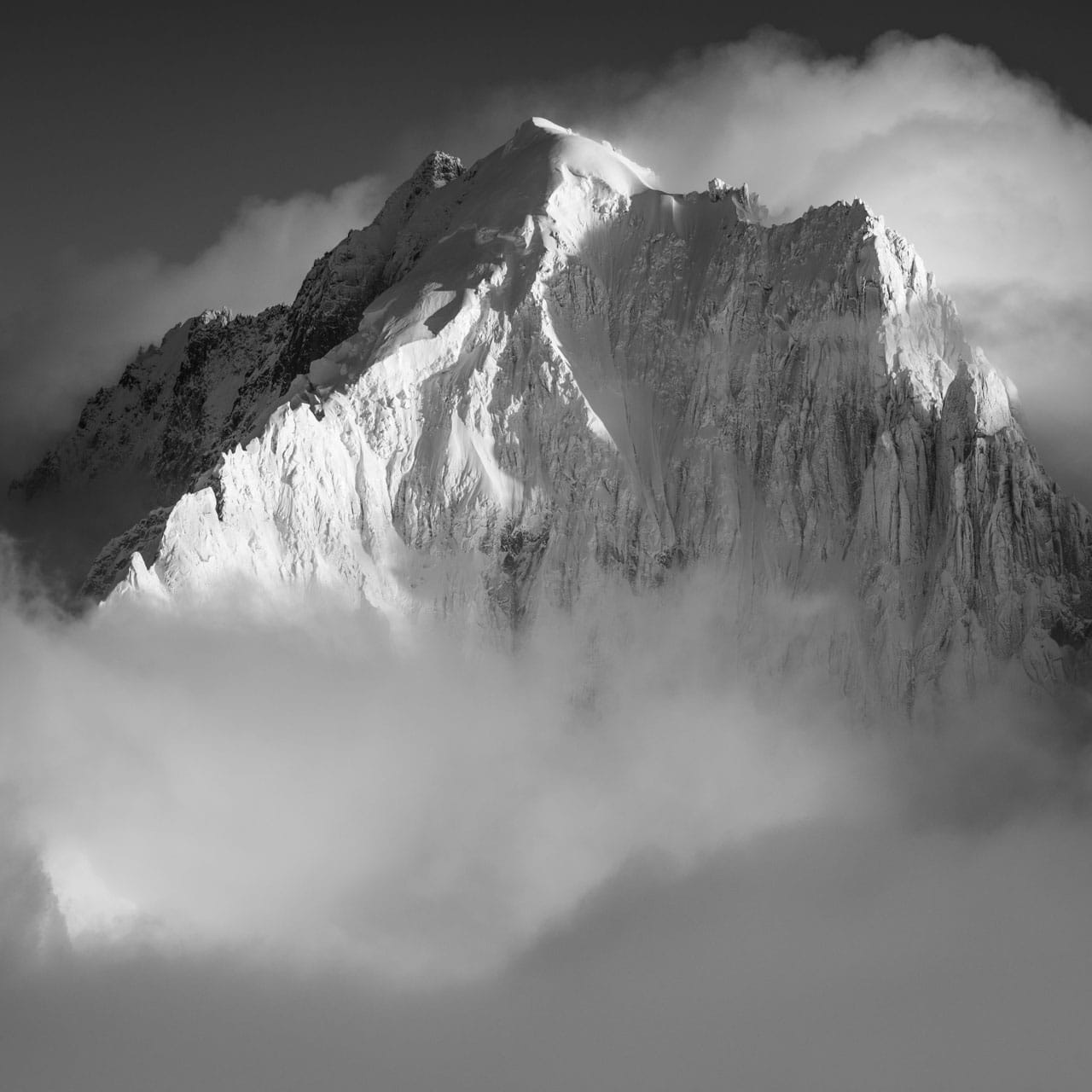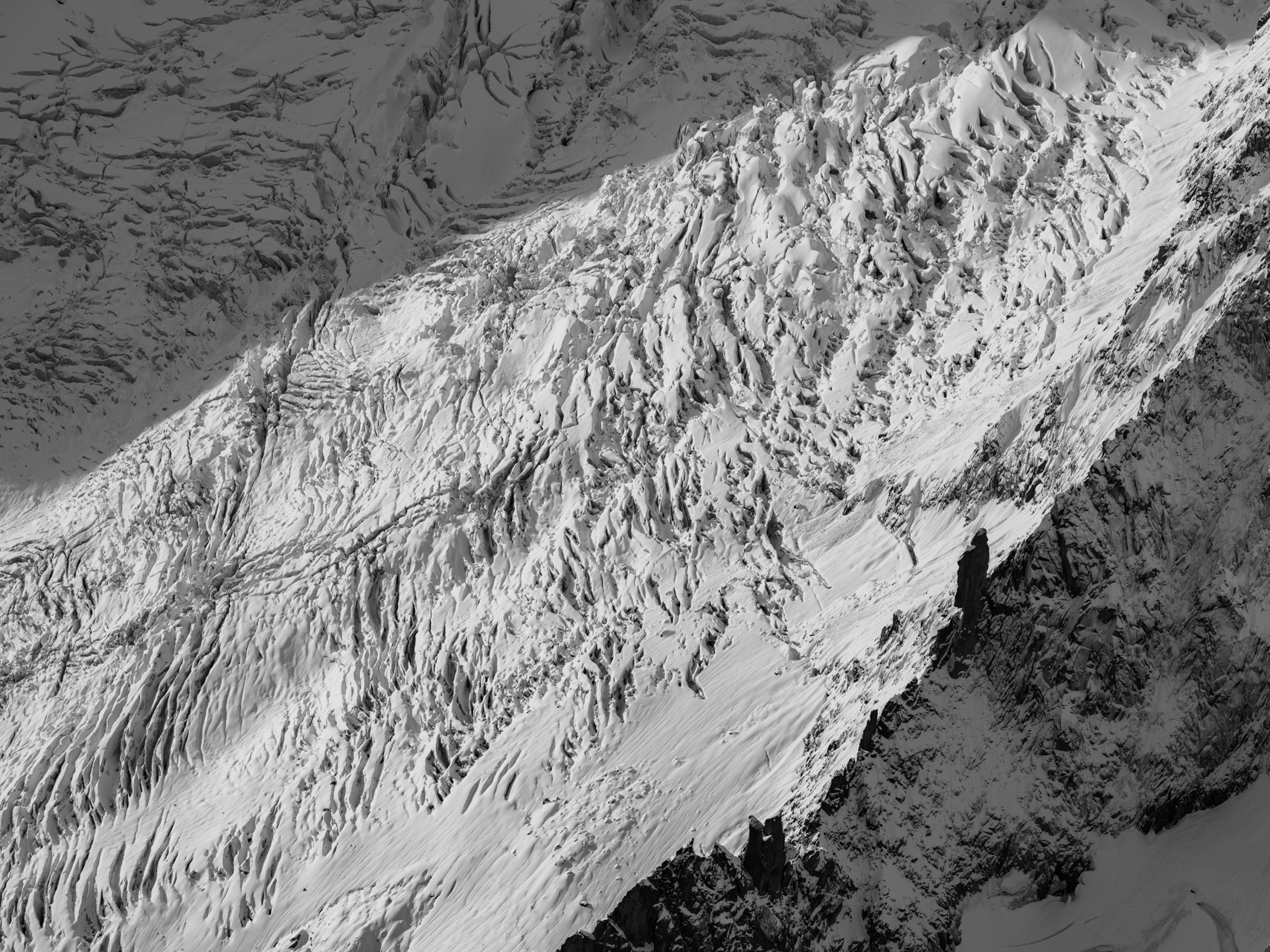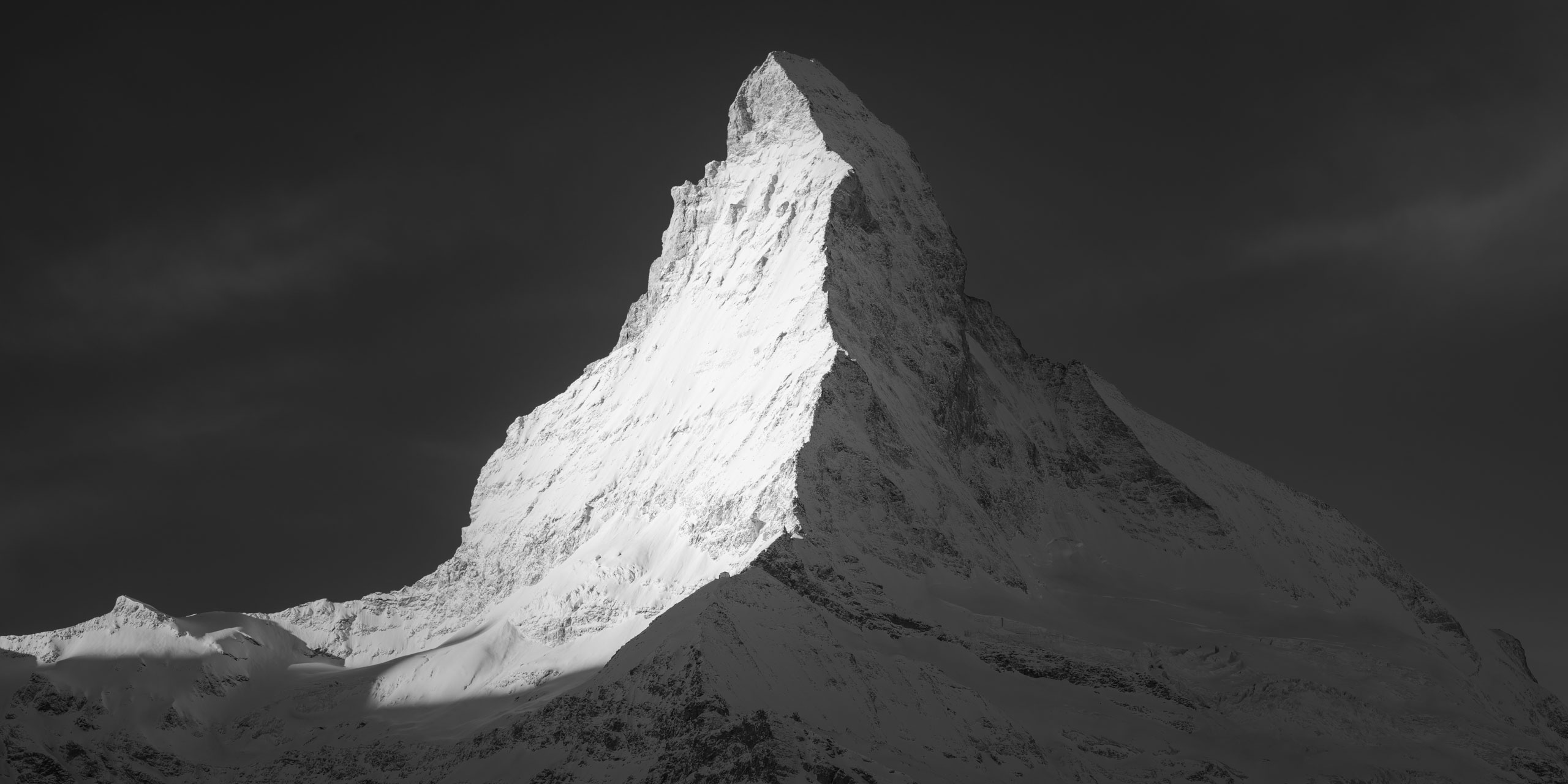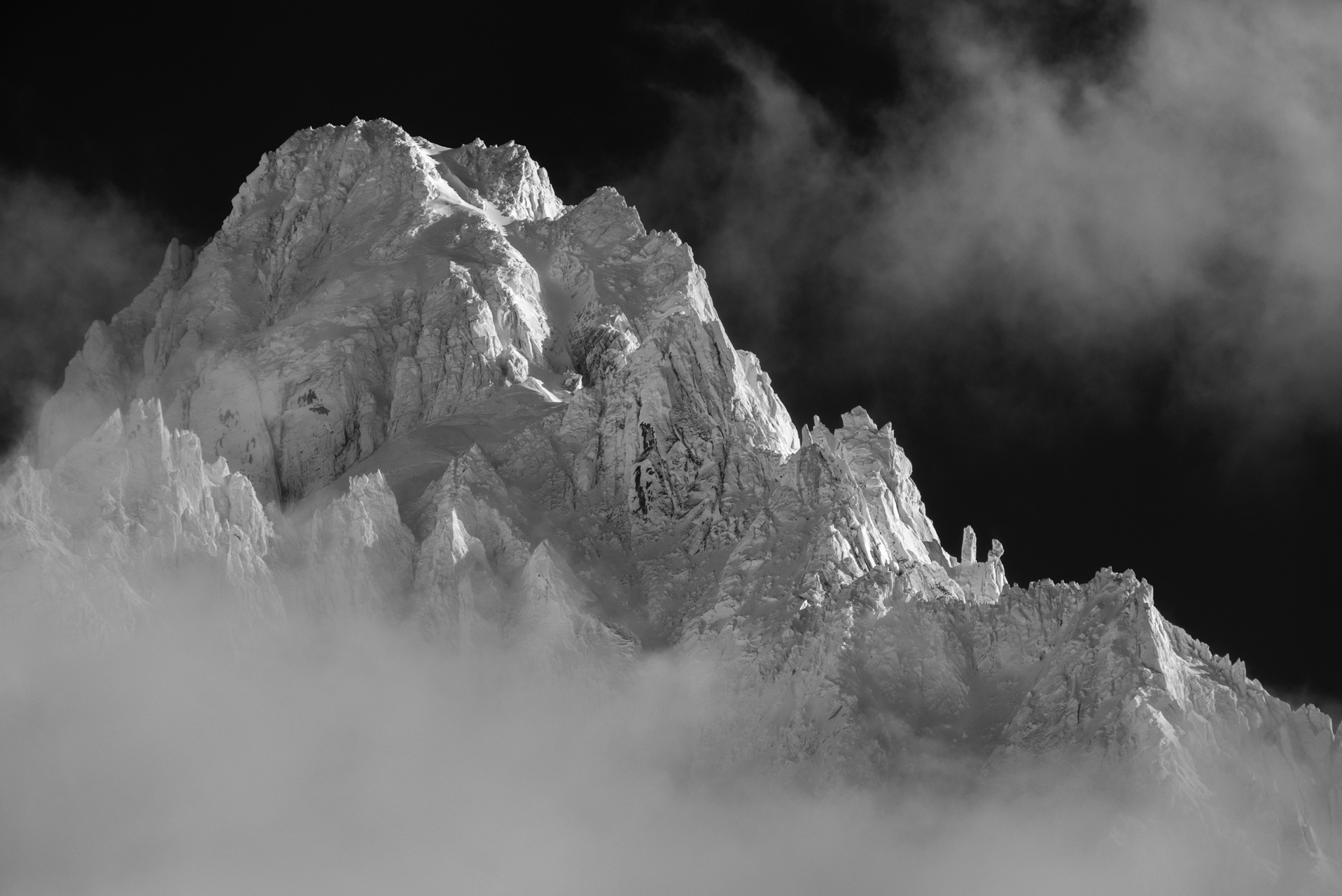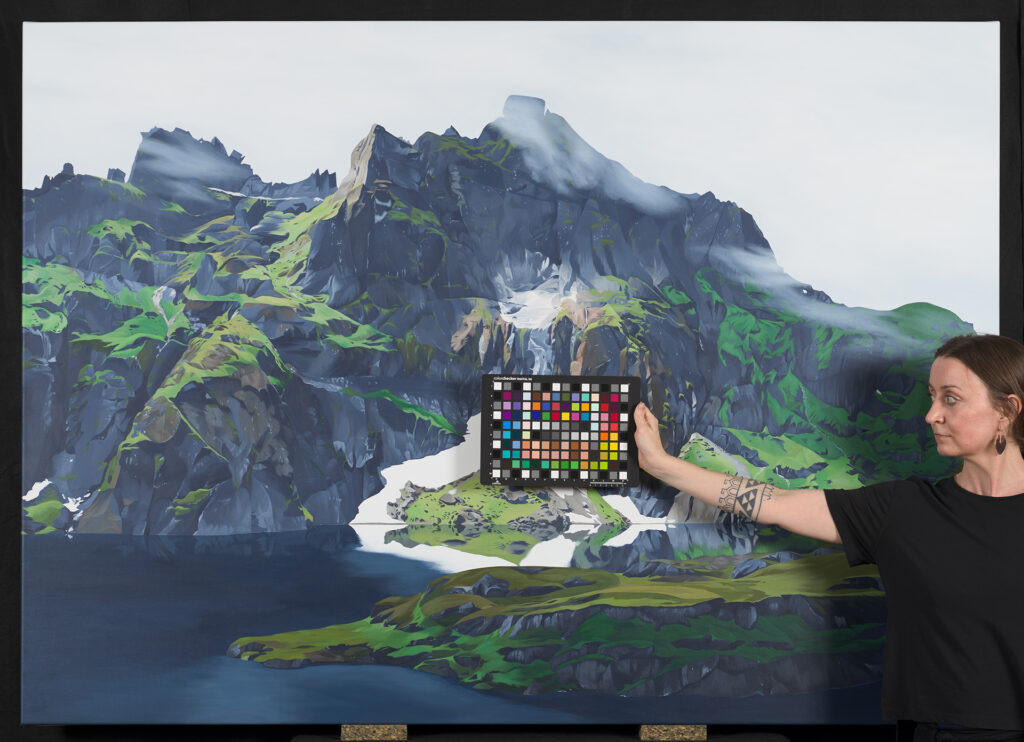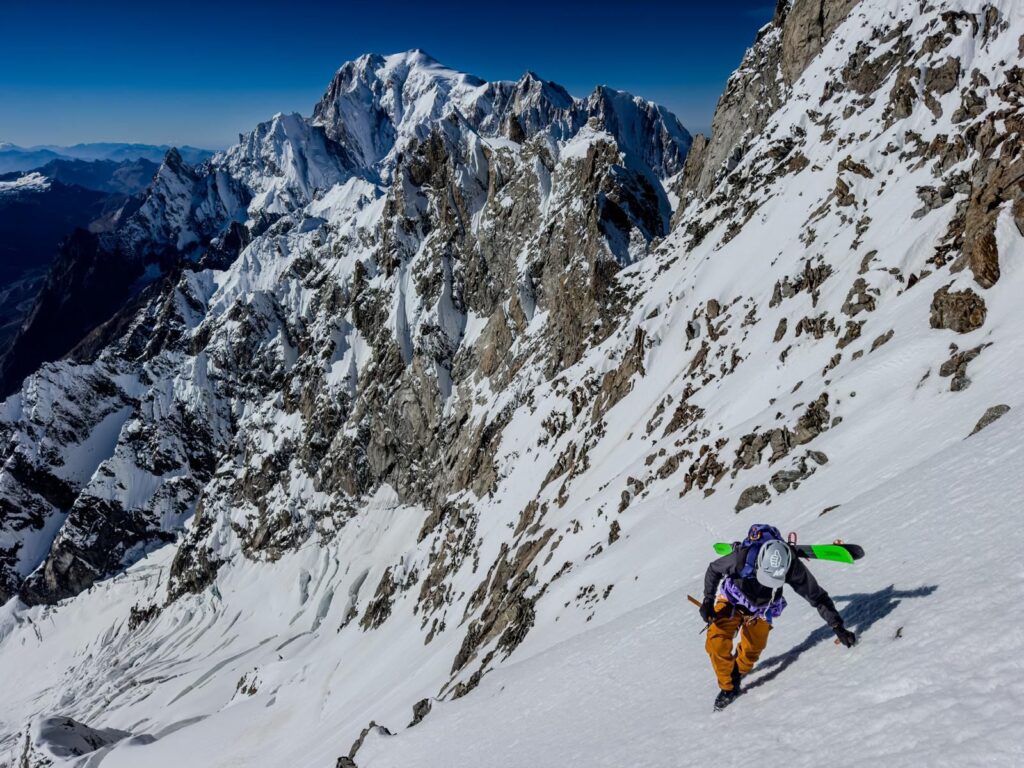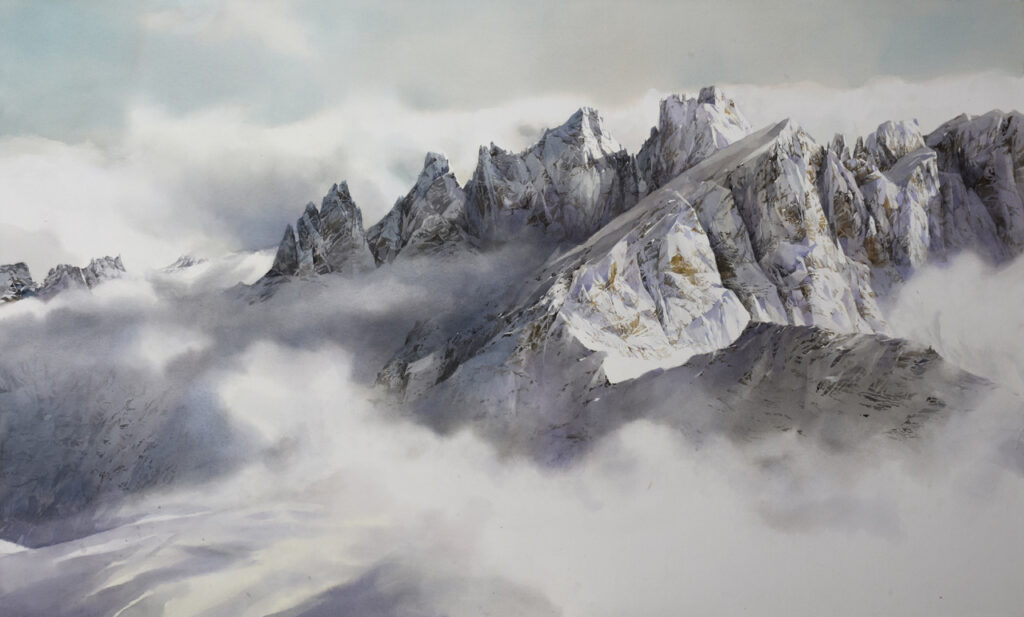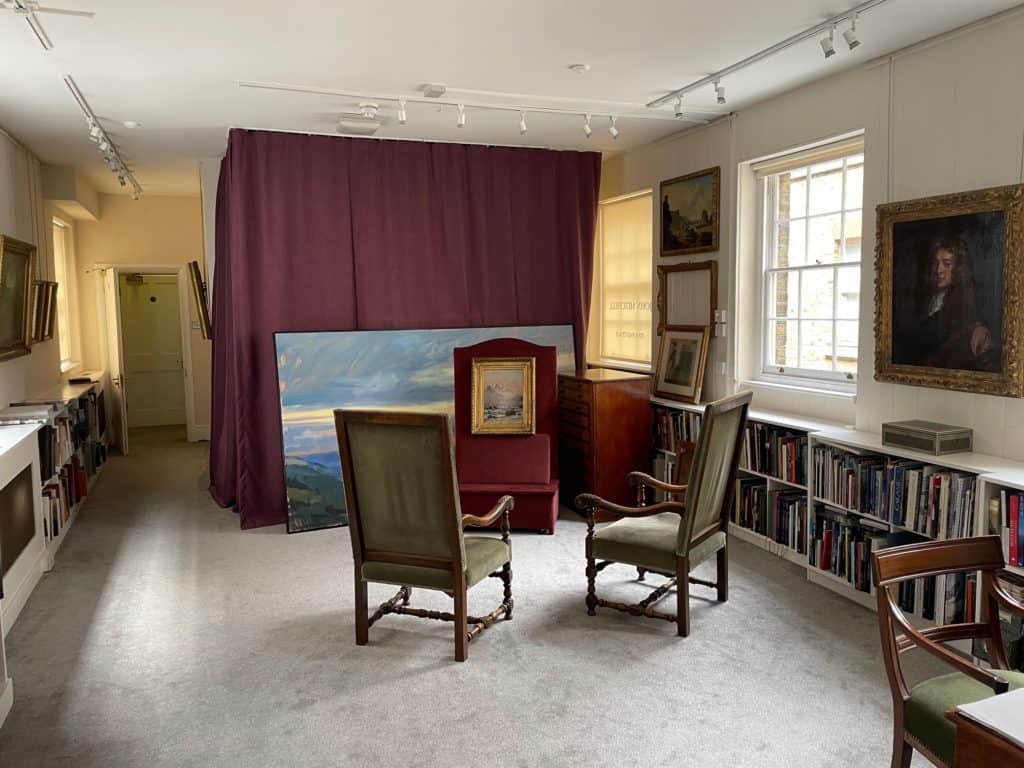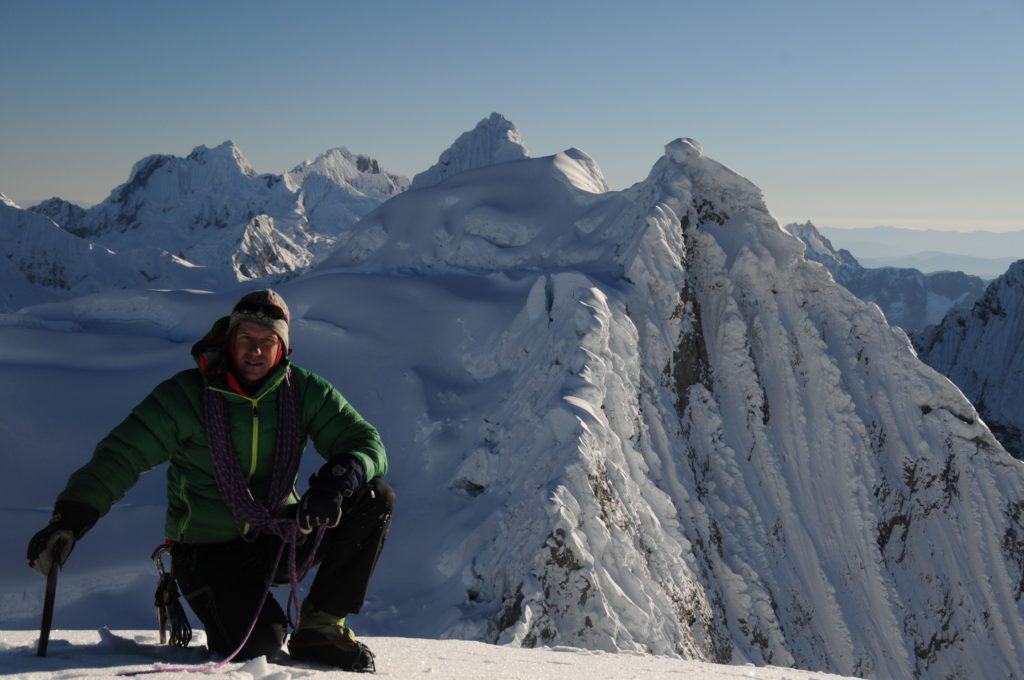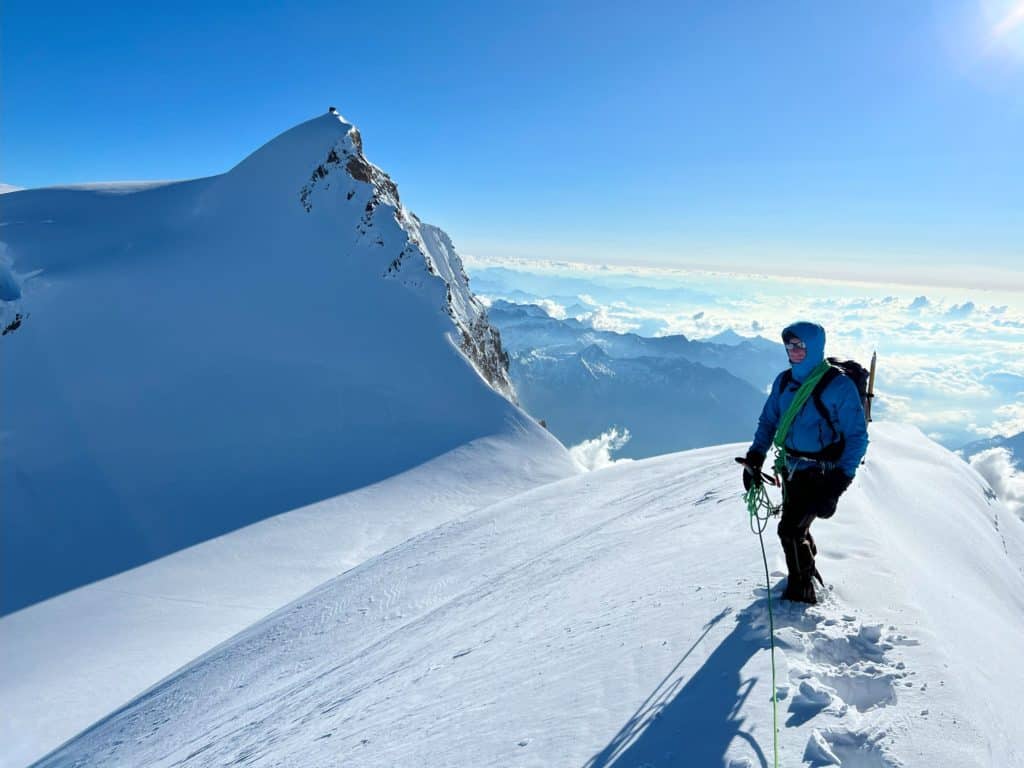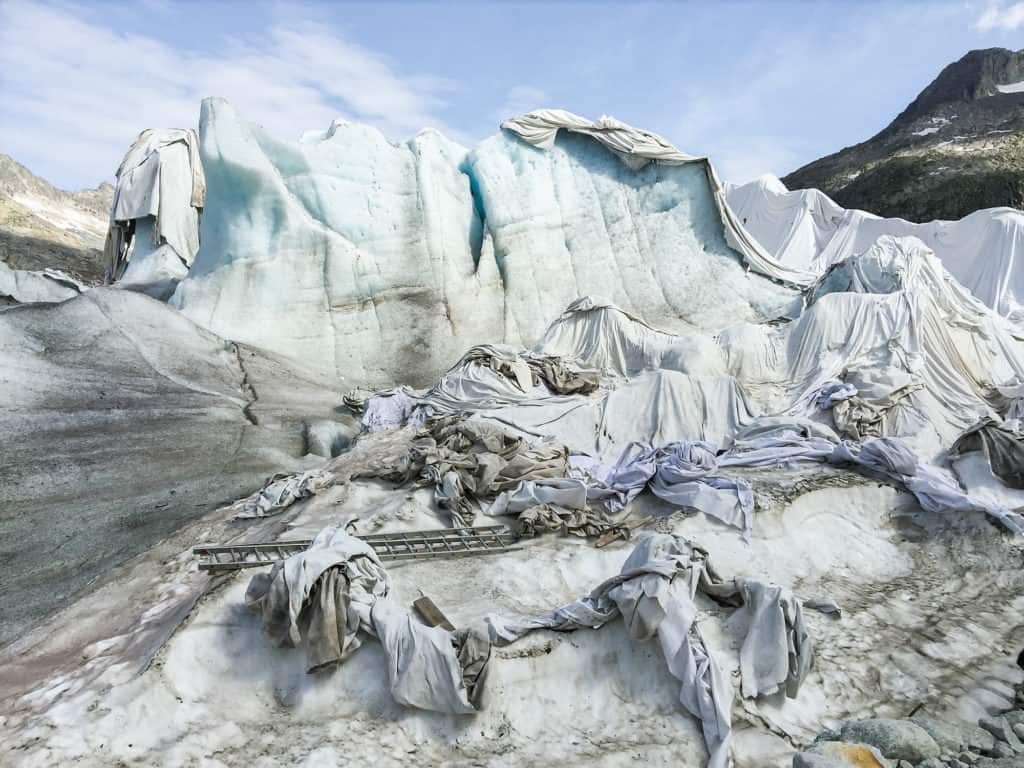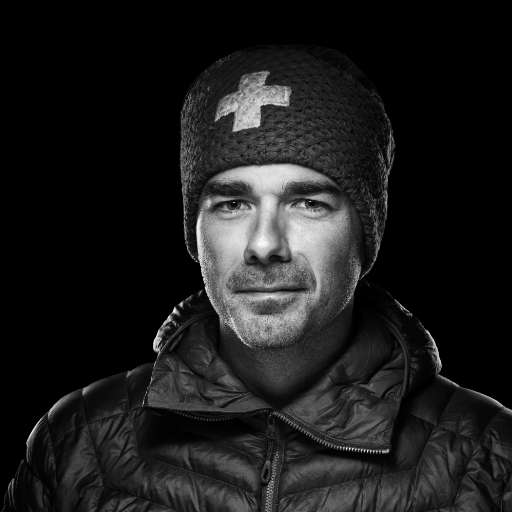High mountain guide and extreme skier, Vivian Bruchez takes steep skiing to summit . A native of the Chamonix valley, he grew up in the heart of the Alps under the aegis of Mont Blanc and its fabulous Aiguilles. Drawing his inspiration from the mountains, he became an artist of the peaks and a pioneer of the heights. Here we meet Vivian Bruchez, a specialist in steep skiing who redesigns the mountains as he makes us dream.
Vivian Bruchez | Child of Chamonix and lover of the Alps
Hello, Vivian. Mountain guide, steep-slope skier, your activities are many. To begin this exchange, how would you define yourself?
I'm originally from Chamonix and my roots draw strength from this valley. Bruchez is a Valais name, but my family has lived here since at least the 18th century. We've always been lulled by the mountains and their verticality inspires us. I'm a mountain guide and ski instructor at ENSA (École nationale de ski et d'alpinisme). My specialty is steep skiing. Today, I devote most of my time to making descents, bringing back images, communicating and writing.
I like to practice and pass on. Being a guide can be seen in a thousand different ways. It can involve climbing summits with clients, but it can also be about spreading the word about the mountains. Inspiring others to discover the most beautiful summits in the Alps and around the world. To explore their slopes, to contemplate the treasures of this exceptional environment. That's how I see my job. To give people from all walks of life the opportunity to discover and appreciate the high mountains. To give them access to this remarkable universe through hiking, climbing, skiing, teaching, photography or documentary. Driven by my love of the mountains and nature, by this desire to pass on and share, and by my attachment to this unique territory. Guiding others to the heights, whatever path you take.

Tell us about the mountain you love so much. What role does it play in your life, and what values do you think it embodies?
The mountains are essential to my life. It's a source of fulfillment, of surpassing oneself, of creation. Like a base that becomes a muse, it carries me and inspires me. In contact with it, I imagine new itineraries, I become a pioneer, I reinvent it.
The mountains demand humility and respect. It demands preparation and commitment. The notion of the roped party is also very important to me. I sometimes carry out solo projects, and I enjoy it, but I'm a team player. I like shared experience, joint adventure. I choose my partners according to the project I'm working on and the aspirations of each one. So that their skills contribute to our success. So that the victory is a collective one. For a long time, I called on people I knew and trusted. But for some time now, my field of search has been widening. In the spring of 2023, I embarked on an incredible adventure with Cody Townsend. We'd only skied together once before, and we had a great rapport, but I hardly knew him. Yet we set off for three weeks in northeastern Canada, across from Greenland, to explore Baffin Island. It was an extraordinary experience. From this expedition was born the film The Polar Star. At the end of the day, you don't need to talk for hours to get involved. The most important thing is to make sure we're listening to each other, that we understand and trust each other. When it exists, this impalpable yet Powerful link is a matter of course.

If you had to choose just one, what would be your fondest mountain memory?
I immediately think of Kilian Jornet. He's the one who has inspired me the most and from whom I've learned the most. Several times world champion in ski-mountaineering and trail running, his career is incredible and his list of achievements impressive. The first time I opened up a new route on skis was with him, in 2012. Before that, I'd made my debut by doing all the big classic descents. But with him, I innovated and created a new route, the Migot Spur, on the Aiguille du Chardonnet. Kilian Jornet gave me the chance to dream bigger. He enabled me to see further ahead, to develop a more avant-garde relationship with the mountains. It was one of the most defining moments of my skiing life. New horizons opened up for me, pushing back the limits of my imagination.
You know, I feel like my life is made up of chapters. When I was young, I was a top-level athlete. Competitive sport ultimately promotes the same values as mountaineering: the need to be prepared, to be demanding. I then became a mountain guide and professional ski instructor. Then I worked as an alpine ski coach. I coached youngsters in the Chamonix valley to the highest level. At the same time, I was perfecting my steep skiing skills. Until the day Kilian opened a new chapter in my life: the creation of ski itineraries. From that moment on, my life changed and I devoted myself more intensely to the mountains.
Which Alpine summit do you have the strongest bond with?
I grew up in Argentière, under the gaze of the Aiguille du Chardonnet, the Aiguille d'Argentière and the Aiguille Verte. Their verticality links them to mountaineering as much as to skiing, and in this way they are intimately linked to my practice. What's more, I've always seen myself in them, and they're almost part of my family. If I had to choose just one, it would be the Aiguille Verte, which lends itself particularly well to skiing. But all three are essential to my life. They look at each other, these mountains. Inspiring and magnificent, they seem to invite us to their summit. And when you reach one of them summits, the other beckons. This is where the magic of the Alps is revealed. Climb over a hump to see beyond it, cross a pass to catch a glimpse of another valley. And venture into an eternal race. The mountains constantly reveal a new part of themselves, and my practice feeds on this infinity. The Alps offer us a fabulous terrain for exploration, thanks to the diversity of their landscapes, the sheer number of summits and their proximity. In the Himalayas, the summits peaks are farther apart and each ascent requires complex organization. But in the Alps, we can carry out highly technical expeditions in just three or four days, and the adventure is already exceptional.
Does your love of the mountains extend beyond the Alps?
For almost 20 years, I focused my activity on the Chamonix region. In fact, I could have stayed there all my life, because every day the mountains are different. The light changes, the conditions evolve. I never tire of the valley and the summits that surround it. But in recent years, I've been offered more and more opportunities to travel beyond the Alps. Of course, I'd love to go to the Himalayas to test my skills at very high altitude. Every trip is a learning experience. And it's by bringing back the fruit of our experiences that we reinvent our alpine practice. Discovering new environments, facing new constraints, trying out new approaches, all contribute to enriching us. Experiencing a situation for yourself is so much more Powerful than just hearing about it. By feeling things, we internalize and assimilate them. It's then easier to reproduce a strategy that works and teach it to others.
Vivian Bruchez | Mountain guide at the summit of the most beautiful mountains in the Alps
Let's talk about mountaineering. How do you feel about climbing the summits Alps?
In autumn, I train for winter. A few days ago, I climbed almost 1000 metres in the forest. If there is a path, I leave it to others and walk straight to summit. I follow the footprints on the ground and blend in with nature. Involved body and soul in my ascent, I become an animal again. Because the mountains force us to be totally involved. Keeping your eyes open and your senses alert, being on the lookout, is a must. Think about anything else, and you take risks. The mountain is uncompromising.
It's also a land of authenticity. The mountains encourage us to take full advantage of the present moment, to unite with nature. They inspire us to push ourselves to the limit. When I feel my heart beating faster, when my breath quickens, I feel alive. When I come into contact with it, I learn things about myself, I rediscover myself. The mountains reveal us to ourselves as much as they renew us. For me, the mountains are a field of exploration, a laboratory for search. I experiment with new outfits, test new approaches and, sometimes, thanks to minimal adjustments, improve my practice.
Why did you decide to become a mountain guide and what does it mean to you?
In fact, I never really asked myself the question. For me, becoming a guide was an obvious choice. I'd always had this fervour within me. I was incredibly lucky not to have to look for my own path, it just grew on me naturally. My parents were ski instructors and, throughout my youth, I was immersed in their world. At home, we shared meals with their clients. Friendship, transmission and sharing around the mountains have always been part of my daily life. But guiding is a passion. It's a vocation to which you devote your life. As an independent, I have to manage my business, guide my customers, make the right decisions and, above all, ensure the safety of my clients. The responsibilities are great and the investment total. But every guide approaches his practice differently. And I like the idea of being able to apply this profession in a thousand different ways. I model it in my own image so that I can flourish in it.

As a mountain guide, can you tell us about an experience that particularly impressed you?
Can I talk about my experience with you? I don't know whether you came to me simply to climb or to help you find your own way. I really enjoyed the time we spent together. While I was skiing in the Swiss Alps, and in particular on the Weisshorn, you sent me one of your works with a note: "You like to ski down mountains, I like to photograph them." That's how we met. I've been your guide on many adventures. And, little by little, I've seen you evolve.
I remember the day you first climbed summit on the Matterhorn, the mythical mountain you love so much. An unforgettable moment. That day, when you were still full of questions, still searching for your path, you finally got closer to yourself. You found yourself that day. What an incredible emotion it was to share that unique moment with you! As you climbed and came into contact with the mountains, I watched you grow and blossom. You were searching for the reasons behind your journey, for the strength that brought you to the Alps to become a photographer. And suddenly, your art took on a whole new meaning. Whereas you'd been used to circling mountains to photograph them, you'd now started to climb them. At first with great apprehension, of course, but then with growing confidence, until you came to see climbing as a natural thing.
Our history is beautiful and our complicity precious. The mountains have brought us together, forging an unfailing friendship. Because what we experience in the mountains is always very Powerful. All the more so as I only climbed with you on summits which I'd never climbed before. I was also in the process of discovery, and we were sharing the same adventure. So, even if we don't get to see each other very often, I know that our bond remains deep and genuine.
I also have a vivid memory of a client who came to me for training in steep skiing. His objectives were immense and he wasn't ready. So, for 5 years, we skied mountain and steep descents together. We worked on his technique and he progressed. One day, he told me he wanted to go to Mont Blanc du Tacul to ski down the Gervasutti couloir. This gigantic 800-metre couloir has a gradient of almost 50 degrees. It's a must, an absolute. But at summit there is a colossal serac. With every vibration, shards of this wall of ice threaten to break off, and the risks are high for those who try. Having already descended this mythical route, I had no reason to return. And I felt it was too dangerous for me to guide my client. So I helped him progress further so that he could complete the descent on his own. Then the moment arrived. When conditions were favorable, he slept in a refuge before going to summit in the early hours of the morning. And he managed to ski the Gervasutti couloir alone.
I experienced his victory as an accomplishment. There's nothing more beautiful than offering someone else the opportunity to realize their greatest dream. To become the instrument of his success, part of a cog in a wheel that's bigger than ourselves. To accompany them until they can stand on their own two feet and see the happiness in their eyes. It's an exceptional feeling. It's for these magical moments that I love my job. I like our ascents to be as much a physical adventure as an inner journey. I love to see my customers evolve, to see them shape their own path and finally arrive at summit forever different. Seeing them grow in contact with the mountain and their dream.
Vivian Bruchez | Steep slope skiing specialist and peak artist
If you don't mind, let's talk about skiing. You're a skier, specializing in steep skiing. What role does this discipline play in your life?

Steep slope skiing came naturally to me. Verticality was part of my daily life. Even as a youngster, the descents I made seemed to me to be of normal difficulty, whereas they were considered by most skiers to be of a very high level. Growing up at Chamonix gave me a different perspective on the mountains. The resort inspires excellence. Every day, you come across champions of all disciplines: mountaineers, climbers, paragliders, free-fall specialists... And when I was preparing to become a guide, I realized that, in the places where I climbed, I was also capable of skiing. So I quickly found my way into steep skiing.
I set my own limits, based on the emotions I feel, my experience and the conditions the mountains offer me. But limits always need to be challenged and reinvented. Listening to others is never enough. Sometimes all it takes is a different way of looking at things, a different way of approaching them, a different set of skills, for what wasn't possible yesterday to become possible today.
There's no doubt that the mountains are changing and metamorphosing. Some of the itineraries once practiced will probably never be used again. This is the challenge facing the mountaineer of the future: to continue to invent, to adapt to new conditions, to play with the elements. The mountaineer is capable of this, as he must constantly adjust his practice to the demands of the mountain.
How does it feel to open up new routes and bring a blank page to life?
It's all about exploration. Before opening a route on skis, I climb it, scan the elements and get a feel for it. I break down the descent. Where there's danger, I know I won't be able to envisage a fall, whereas at a wider point, I'll be able to descend more relaxed. For me, opening up a new path is a matter of aesthetics. I can't explain what moves me or what I search in a mountain, but if I feel it's beautiful, if the line I draw on its flanks sublimates its grandeur, then the experience I have there is magical. I like roundabout routes that wrap around mountains, because I like the idea of extending the journey. The part of logic that helps me define a line leads to the creation of an artistic route shaped in honor of the mountain I walk.
I'm very touched when people call me the artist of the peaks, because this artistic vision guides me all the time. In the aesthetics of a line, in the story I create. I see steep skiing as a means of expression. Like a painter with a brush, I use my skis as instruments. Putting them on connects me to the mountain. But my ultimate reward is repetition. When people follow my itineraries and experience their own adventures. When I've succeeded in arousing their curiosity and arousing their desire. That's when my approach really comes into its own.

What are your proudest sporting achievements?
I'd say the experience that made the biggest impression on me was the opening in 2018 of a new itinerary in the Nant Blanc, along the Aiguille Verte. This descent was first done in 1989, before being done again in 1999 and 2009. The Nant Blanc descent is considered the most legendary in the Alps. And rightly so, since it's a very challenging descent, visible from Chamonix. Every day, we look forward to it and dream about it. Growing up in the valley, faced with this spectacular slope, I convinced myself that descending it would be impossible. But you have to overcome self-imposed barriers. After several attempts, I managed to descend this vertiginous wall without following the route of my predecessors. I chose to offer a new way out. It's a way of reinventing the west face of Aiguille Verte, of taking a fresh look at this legendary peak. This descent marks an important stage in my career. I put the best of my technique into it, while redesigning the route in my own image. Taking inspiration from what already exists to make it even better, and then, I hope, inspiring others to add their own personal touch. That's how I see it.
Vivian Bruchez | Extreme skiing teacher at the French National Ski and Mountaineering School
Transmission plays a central role in your practice. What do you teach at ENSA (École nationale de ski et d'alpinisme)?
ENSA trains both ski instructors and mountain guides in France. I'm involved in both, and particularly in training tomorrow's professionals in off-piste skiing. I currently devote at least 4 weeks a year to this in the dead of winter. The teaching team works together on a common program designed to deliver a global message. Depending on their experience and skills, each teacher offers a unique learning experience. I love teaching because, when you teach others, you also learn a lot about yourself. You have to find the right way to make yourself understood, and ask yourself the right questions. What message do I want to send to future professionals? What values do I feel are important to inculcate? And by questioning myself in this way, I help my own practice to evolve. It's an intense and fruitful exchange from which we all come out winners.
Vivian Bruchez | Steep-slope skier in the documentary spotlight
Can you tell us about the documentary films that highlight your practice of steep skiing?
T'es pas bien là? is the film that launched me into the world of cinema. Released in 2013, it's still being shown today on Netflix, which gives it a lot of exposure. Since then, I've been involved in almost one film a year. This year, two of my films are even being screened, the first on my expedition to Baffin Land and the second on the Aiguille Verte.
I'm involved throughout the creative process. I define the subject of the film, set up the project and make it possible. Even if I'm never the author, I've always been very involved in writing the scripts. Of course, I work with a film crew that shoots, edits and manages distribution. But these days, I'm creating more and more content on my own, using an onboard camera or a drone, for example. Even if self-production is a lot of work, I like the idea of a loop. I like the idea of embracing a project as a whole. And I love getting involved to ensure that my films live on after they've been shot. I accompany these projects right up to their screening and present them to the public. Being present at festivals and in cinemas is very important to me.
I see you smiling. Do you remember any of those film screenings?
When I think of my films in this way, I think of an amusing memory. May I digress for a moment? The story takes place in 2019. I was doing a 190-date tour of Europe to present my film Entre les lignes, released in 2018. But I wanted to give the audience a unique experience. I wanted the skier to step out of the screen and onto the stage. So I built a 6-metre-high wooden module simulating a slope. No one had ever done anything like it before. I had to invent everything, select the right materials and find the right structure. I put myself through a lot of trouble, but I was rewarded a thousand times over by the audience's response. At the end of each performance, I'd arrive on stage in my ski suit and microphone. I climbed the artificial slope I'd created with crampons to summit , then skied down. The audience was thrilled! Back on stage, we'd chat about steep skiing technique and the history of the discipline. I loved these moments of sharing. Passing on my vision of skiing while surprising the audience. The whole tour was a wonderful experience.
The story is beautiful, but it's far from over! When I saw that several of my experienced skier friends were having difficulty skiing on this module, I thought it might be useful to integrate it into the training offered by ENSA. I took it a step further, and today it's used to teach steep skiing. Who would have imagined that this invention, designed to offer more to the public, would one day become a teaching tool? At first, people thought I was crazy, but it made me laugh. I was thriving on the project, and that was the main thing. But to see that my wooden track now accompanies future professionals in their progress makes me happy. I innovated, I dared. Don't limit yourself, follow your instincts, let your imagination run wild and, above all, believe in yourself. Believe in yourself and your projects. That's the lesson I would draw from this story. Sometimes our vision surprises us, but with time, it finds its rightful place.
Vivian Bruchez | Steep skiing and highlighting the grandeur of the Alps
Your job is not without risks. Has your relationship with the mountains changed since you became a father?
Surprisingly, some of the most daring projects I've undertaken since I started steep skiing came about after the birth of my daughters. My projects are more and more committed, but now that I'm a father, I spend more time preparing them. I weigh up the pros and cons, and make my decisions more professionally. When you're in contact with the mountains and the elements, there's always danger, so I adapt my technique to the risks involved. I assess the relevance of the adventures I embark on, and allow myself to refuse certain proposals. And, above all, I ask myself the right questions: does this expedition make sense for me? Why do I feel the need to go? To prove something to myself? Because I'm being pushed into it? These are the questions I ask myself every day. By making reasoned choices, my practice becomes more constructive. It's easy to get involved for the wrong reasons, so it's up to us to know how to react to put things right.

How would you say your activities help to highlight the greatness of the Alps and the high mountains?
I like to convey what I feel and experience in the mountains every day. Emotion and sharing are at the heart of my approach. My projects draw on the values of the mountains: commitment, authenticity and contemplation. From the lines I create on the most beautiful peaks to the films I make, my work bears witness to the beauty of the Alps. I love the idea of relaying a story that goes beyond myself. Because the mountain of today is neither the mountain of yesterday nor the mountain of tomorrow. I'm deeply inspired by the evolution of the emblematic summits that I come into contact with on a daily basis, and by the careers of the people who have written the history of mountaineering. This voluntary and abundant past instills in me the desire for new projects.
Preserving the memory of the Alps is also close to my heart. At the end of a project that took me to summit of the most famous mountains in the Alps, I donated my ski suit to the Alpine Museum at Chamonix. The silhouette of today's skier, and the corresponding images, are now part of Alpine heritage, illustrating the practice of today. And I'm infinitely touched. We never cease to be inspired by our predecessors, but we must never forget that we are also the elders of future generations. And leaving a trace seems essential to me.
That's why filming is so important to me. I've always wanted to communicate with the widest possible audience. So when my documentaries are broadcast on Netflix or on board Air France planes, I'm delighted. It's the fulfillment of a dream. Because my work touches people from all walks of life. It's up to me to make the encounter a beautiful one. It's up to me to make them aware of the mountains in a different way, through emotion rather than performance, through sensations rather than technique alone. That little extra that makes the film work, that unspeakable something that allows people to identify with the images that flash by, is difficult to perceive. The impalpable cannot be explained, and it is rare to reach it. Either you overdo it, or you do it wrong, or your approach remains misunderstood. But when the magic happens, when the right intention illuminates the film, and when the audience perceives it, then the adventure is extraordinary. At the moment, I've had the inestimable good fortune to see my films well received. And I'm very happy about that. My greatest reward comes at festivals, when I take the pulse of full houses and answer audience questions after the show. I give much more to the audience during these exchanges than I do in the films themselves. That's where my job really comes into its own. To pass on a message, to share a passion, to highlight the greatness of the Alps, and to be enriched by the eyes of others. That's the reason for my career. From my high-mountain ascents to my unprecedented descents on steep skis, that's why my heart beats every day.
Vivian Bruchez continues to climb the Alps. Creating ever more inspiring itineraries, he paves the way for future generations. Through his films, his practice and his teaching, he passes on his passion for the mountains and his love of life. Because nothing can match the splendor of the Alps. Because the present is constantly nourished by sharing and adventure.

